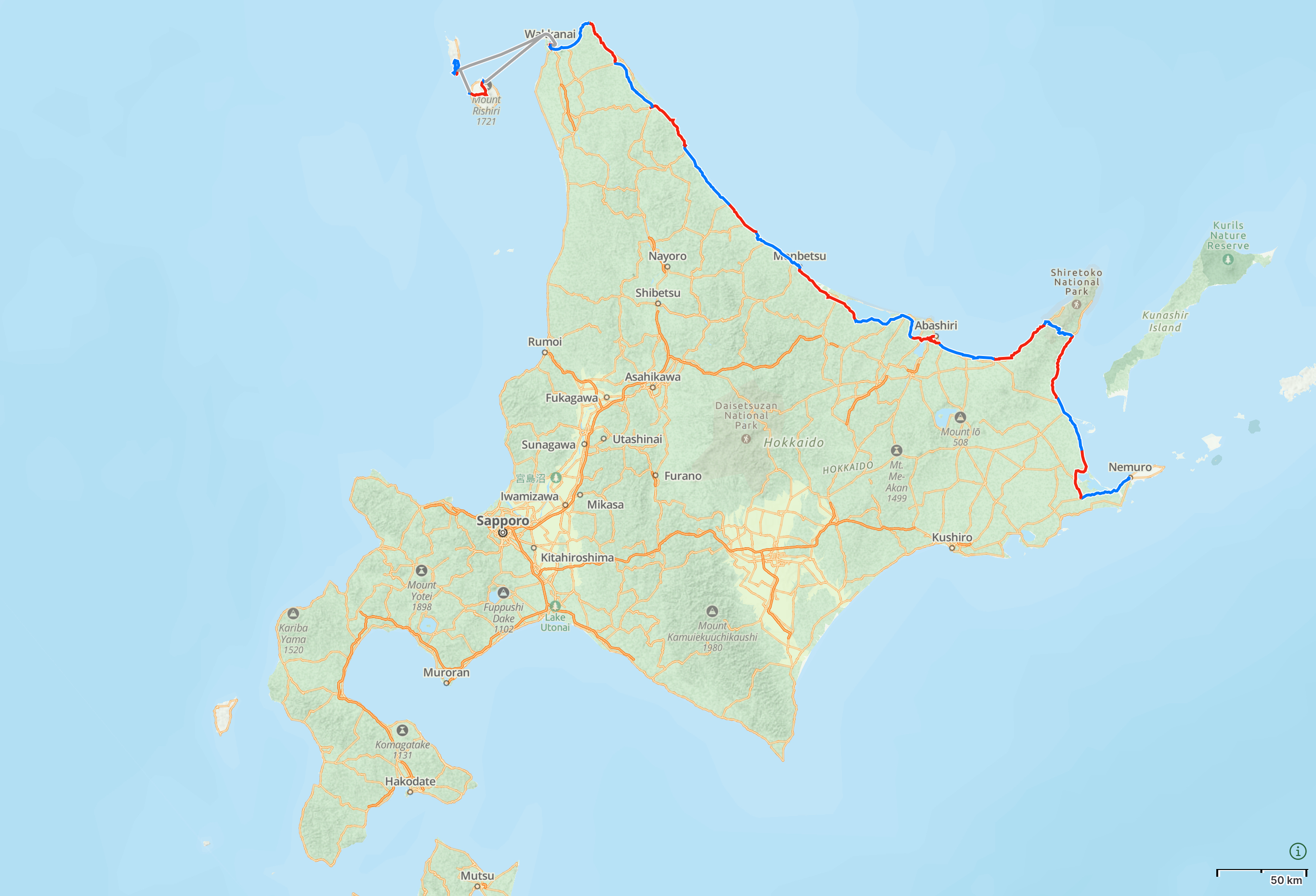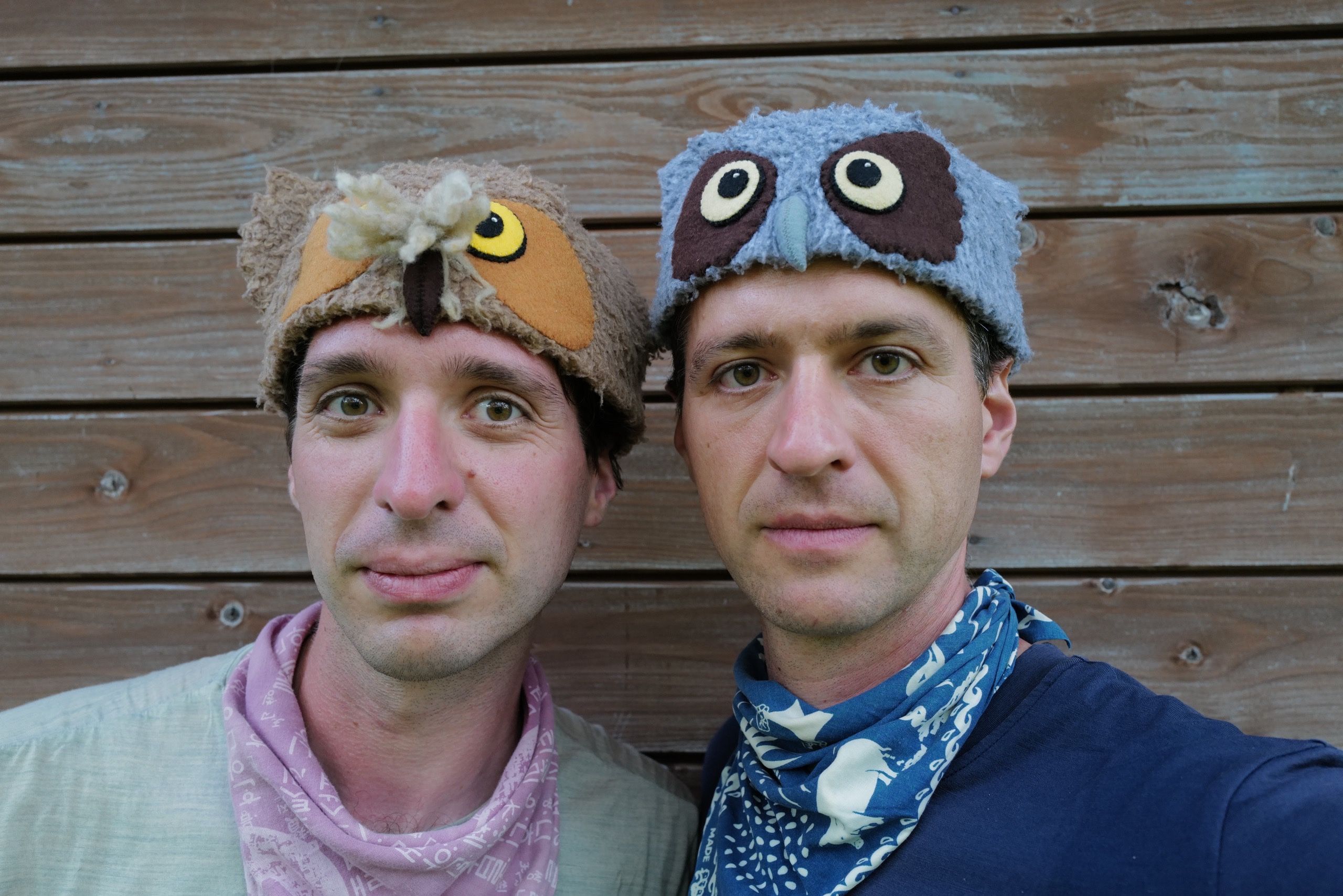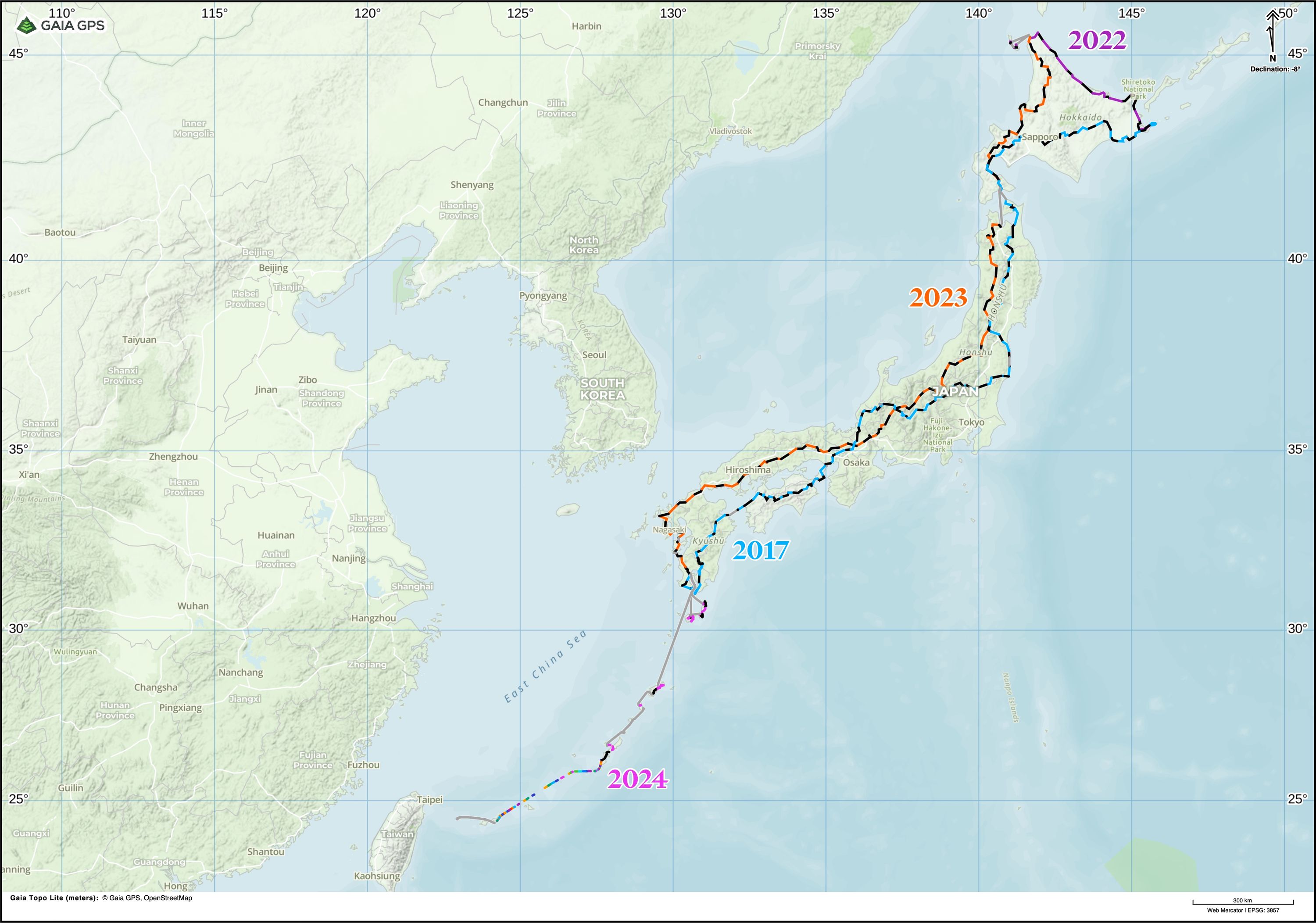Human Again

Human Again is a series of three longer dispatches I wrote on a 640-kilometer walk across Hokkaido, the northernmost of Japan’s four main islands, in August and September 2022.
Learn more about this project at /japan
It continues the journey described in These Walking Dreams, the field diary I kept on a 4,300-kilometer walk across Japan.
That walk finished in Nemuro, near the easternmost point of the Japanese mainland, on August 21, 2017. This walk continues from the same spot on August 22, 2022.

Except for three ferry crossings, marked in grey on the map above, I walked every step of the way.
My brother Gabor Orosz, who had walked with me in 2017 on the Hokkaido part of my journey, joined me this time, too. We left Nemuro from the same spot where we had concluded our 2017 trip, and walked together to Abashiri, on the shore of the Sea of Okhotsk. From there I walked on alone to Wakkanai, the northernmost city on the Japanese mainland, then traveled to two outlying islands, Rebun and Rishiri.

Index
- Dispatch 1, September 5: Death will be like the end of the summer holidays
- Dispatch 2, September 16: A fascination with places that look remote
- Dispatch 3, September 28: And you’ll climb a mountain and stand all alone at the top, and then you will have to come all the way home again
My plan was to walk all the way back to Kagoshima, but a foot injury prevented me from doing so. I finished my walk upon returning to Wakkanai from Rishiri, on September 14.
A year later, on September 15, 2023, I walked on from Wakkanai to Kagoshima, which I reached on January 6, 2024. After a three-month break, I was joined by my wife Natalie Kallay, and we traveled across the Nansei Islands to Yonaguni, the westernmost point of Japan, and the end of my journey: 9,000 kilometers around, and out of, Japan.

Data Reduction 9K
From March to June 2025, I’m an artist in residence at Tenjinyama Art Studio in Sapporo, Japan, where I’m writing Data Reduction 9K, a blog about figuring out whether my walk was interesting enough for a book. Sign up here to get an email when I write a new post:
A blog about Peter Orosz’s 9,000-kilometer walk around Japan.
Notes and acknowledgments
Joan M. Anderson in Tokyo served as the most wonderful support crew for the expedition.
Annikki Eigo at the Embassy of Japan in Estonia and Julian Claresby in Amakusa, Japan, provided invaluable assistance in getting a visa, without which I could not have entered Japan in the summer of 2022 because of Covid-related border restrictions.
Japanese words, geographical locations, and personal names are transcribed into English using the Modified Hepburn romanization. Japanese names are written in the Japanese order, the family name first and the given name second. With the exception of the names of Tokyo, Osaka, Hokkaido, Honshu, and Kyushu, spelled in the international style, long vowels are marked with macrons (ō, ū).
Geographical names are based on data from Google Maps, OpenStreetMap, the Geospatial Information Authority of Japan, and other sources. Google Translate and Renzo Japanese were used to clarify transliterations.
Maps are plotted in Gaia GPS, using data from OpenStreetMap, and displayed on Gaia GPS’s Gaia Topo map.
Special thanks to Natalie Kallay, my wife, who supported this silliness in a most difficult time of her life.
Last update: March 5, 2025

